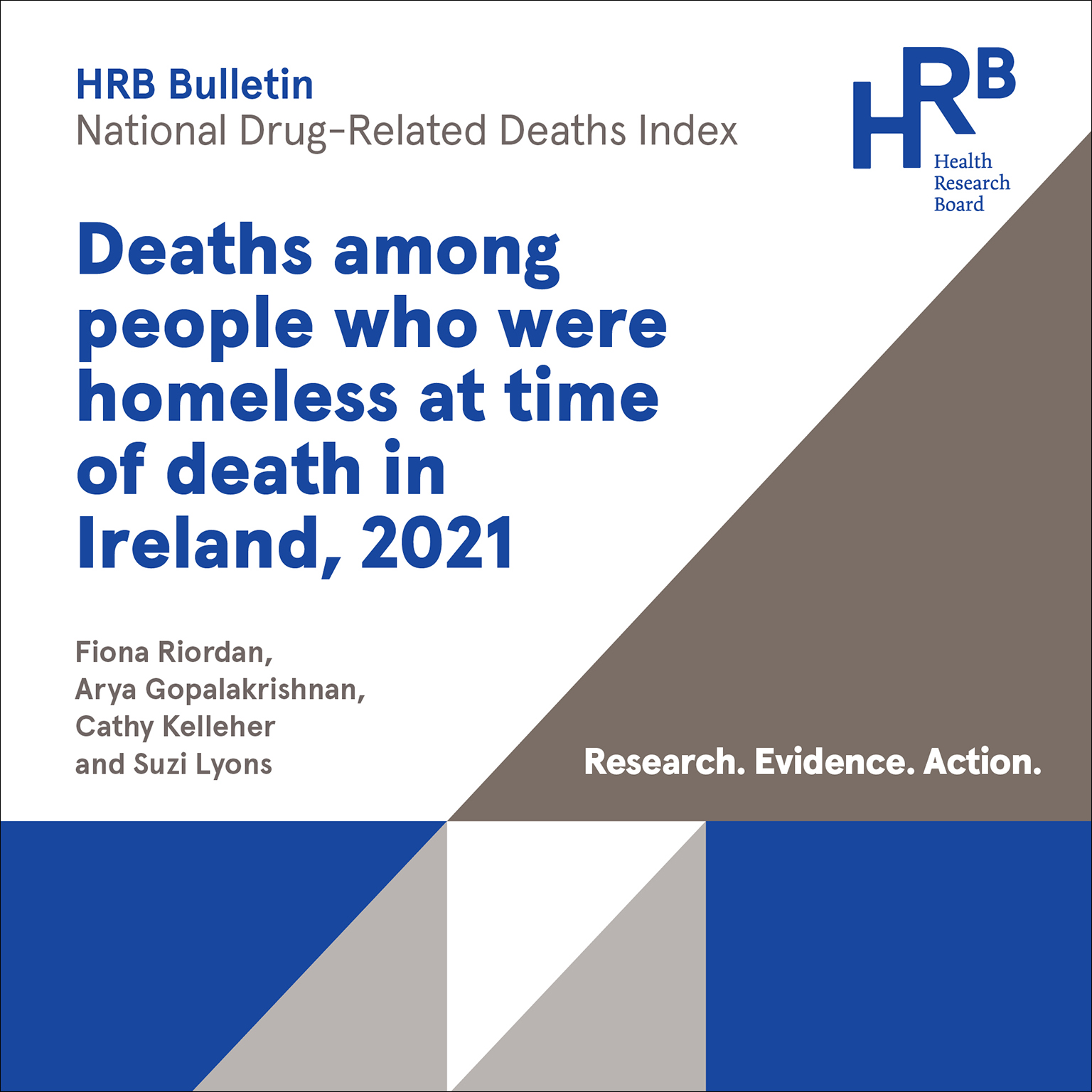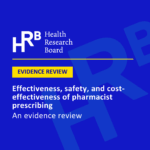History of problem substance use in 86% of homeless deaths
At least one in three cases experiencing mental health issues, latest figures show
4 min read - 20 May 2025

Almost nine-in-ten people who died while homeless had a history of problem substance use, according to the latest annual figures published by the Health Research Board (HRB) today.
Deaths among people who were homeless at time of death in Ireland, 2021, shows 128 premature and preventable deaths among people who were homeless in 2021 – the latest year for which figures are compiled.*
The latest data show that 8 in 10 (80%) of all deaths were among males with a median age of 44 while the median age among females was 37.
Cause of death
Almost half (48%) of deaths were due to drug poisoning while over half (52%) were due to other causes, mainly medical conditions.
In 2021, the most common drug groups implicated in the 61 poisoning deaths were opioids (82%), benzodiazepines (69%), alcohol (38%), and cocaine (36%). Polysubstance poisoning accounted for the majority of poisoning deaths among males (85%) and all poisoning deaths among females (100%).
The opioid, methadone, was the most common drug implicated in poisoning deaths (52%), a higher proportion among females (85%) compared to males (44%).
Over a third (38%) of those who died while homeless were known to have accessed substance use treatment at some stage of their life, with 28% known to be accessing treatment at time of death.
Non-poisonings were mainly due to medical causes (70%) such as cardiovascular issues, while 30% involved trauma such as drowning or falling.
The HRB report also shows there were 18 (14%) deaths among people who were homeless and had no recorded history of drug or alcohol use. The median age of this group was 56 years.
Mental health issues
One-in-three deaths were among people with a known history of mental health issues (52% of all female fatalities and 29% of all male fatalities).
Of these, 79% were known to be in contact with medical services, including substance use treatment services (100% of females compared to 70% of males).
HRB Chief Executive Dr Mairéad O’Driscoll said:
“These findings highlight the difficult reality faced by some of the most vulnerable people in society, caught in cycle of homelessness, substance use and mental health issues.
“We collect and analyse data on the nature and circumstances of these deaths to provide evidence that can inform harm-reduction strategies and future policies to support those experiencing homelessness.”
Location of death
Of the total of 128 deaths, 83 were among people in temporary or crisis accommodation, while 30 people who died were sleeping rough. The remainder were living in what is classified as “unstable” or “severely substandard, or highly insecure accommodation”.
Homeless accommodation was the most common location of where the death occurred (44%), with a further 29% occurring in a public place or public building.
Dublin city and county accounted for 63% of homeless deaths, while 9% occurred in Cork city and county.
The regional breakdown shows 13% of deaths occurred in the South-West; 10% in the Mid-West, West, and North-West region; the Mid-East, North-East, and Midlands region accounted for 9% of deaths and the South-East accounted for 6% of deaths.
Dr Suzi Lyons, Senior Researcher at the HRB and co-author the report, said:
“Problem substance use and mental health conditions remain some of the key health challenges for people who are homeless, with the majority of those who died dealing with one or both of these issues at the time of their death. Misuse of more than one drug or substance significantly increases the risk of fatal overdose, which is clear in the number of polysubstance deaths.”
Injecting
The HRB figures show just over one in five people who died had a known history of injecting drugs, with one in 10 injecting at the time of death
“These figures highlight the importance of harm reduction interventions such as supervised injecting rooms and access to the medicine naloxone which rapidly reverses opioid overdose,” Dr Lyons said.
* While the data refer to the year of death, coroners’ files, in some cases, are not closed until a year or more after death.
Publication: Deaths among people who were homeless at time of death in Ireland, 2021
4 min read - 20 May 2025



